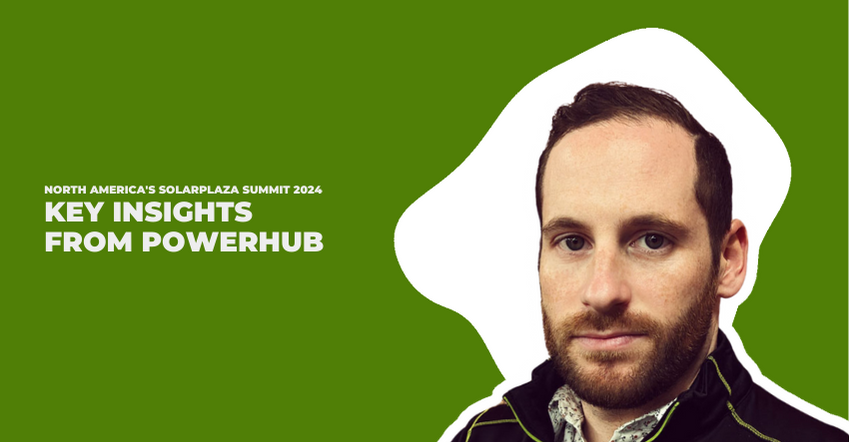Building easy to manage renewable energy projects
I venture to say that, in broad strokes, every party invested in the renewable energy development process can agree: a truly great project, outside of being profitable, is easy to manage.
Every stakeholder group, the developers, owners, asset managers, and the O&M provider, has a different perspective on what’s important. So what does it take to satisfy all of these different groups?
In our experience, these concerns fall into three main buckets, all of which need to be considered early in the energy project development process. They’re: 1) design/equipment, 2) operations and maintenance, and 3) stakeholder management.
We’ve written about all of these things individually before, but it’s the synergy between them that makes a project great and easy to manage. Here’s a few fundamental components of a truly easy to manage renewable energy project.
Standardizing Renewable Energy Project Design
A successful renewable energy project has a solid project design as its foundation.
For example, laying out your wind farm in a certain way to maximize wake steering could result in significantly higher outputs (up to 47 percent higher during low wind speeds). A decision as simple as putting a solar project next to a highway could have impacts 20 years later because of excess soiling.
But perhaps the most important decision a developer makes is the equipment they use to build a project. In an ideal project, you’d want to see an accessible layout, with reliable equipment that performs as expected, and an O&M team providing stellar service if there are quirks (more on that below). Wouldn’t that be lovely?
You’d also want your fleet to use the same equipment package. That way, your team only needs to know their way around one type of inverter or panel. That makes it a lot easier to manage the spare parts, warranties, and agreements.
Aside from equipment, you’d also want standardized contracts with the same terms and conditions, scopes of work, and methods. It’s much easier to stick to agreements if you can easily navigate the terms, without having to review them every time.
If you’re thinking that most of what I just talked about are O&M considerations…you’re right. That’s because so much of what O&M providers deal with is related to decisions made in the earliest project development stages. The cliché often ends up being true: if you’re pointing a finger at your O&M provider for project issues, there are three pointing back at you.
Intelligent Operations and Maintenance
Here’s a universal truth: from the asset manager’s perspective, the easiest project to operate is the one that’s (well-) managed by the O&M provider.
But as a good O&M provider, maintenance simplicity depends on the quality of the build and its components. How resilient is the system? Are there hotspots or technical issues that keep coming up? What are the benchmarks? How are you reliably getting complete data to remotely monitor these sites, to allow your team to make good maintenance decisions and pave the way for smoother operations? Do you have access to underlying agreements? Do you know the contacts on the ground? If you can at least answer all of these questions confidently, you’re off to a good start.
To make the lives of the boots on the ground easier, you should be thinking about clarity and cost.
You can measure clarity by how often your team is caught off guard. This can be as simple as having a clear, well-understood approvals process. A team member flags that something needs to be done, there’s a clear sign-off process, and no time is wasted. It impacts how efficient workers are onsite, how clear they are on their roles and the expected flow of information.
Measuring success around cost is something we’ve done for years. We look at the cost of a truck rollout, versus the cost of current issues, and work backwards. Ultimately, everyone’s goal is to make sure onsite visits are worth it.
In my experience, the best way to do that is to actually look past the dollar value, and at a recurring operational pattern: are your employees on the ground to look for the problem, or can they get that information beforehand so they focus on efficiently solving them?
Clear Stakeholder Communication
Above all, an easy to manage plant is one where everything is clear. The flow of information, project data, stakeholder expectations, and division of responsibilities are clear to everyone.
This is the secret to the renewable energy projects and portfolios that run like well-organized and well-oiled machines.
What’s due when, to whom, and in what format? Are those formats automated, and how is data flowing into them automatically? How are documents organized and controlled? Can external stakeholders access information they may need—are employees manually gathering up data, exposing the process to a bunch of human errors, or is there a portal where stakeholders can self-serve reports?
Transparency and communication are the be-all and end-all of easy projects. They mean that any issue that may come up can be handled swiftly.
How you build these systems of reporting and communication needs to be considered early in the energy project development process. These design considerations have an impact on maintenance, which ultimate impacts operations. Operations then impacts financing, which impacts your portfolio. All of this impacts your asset management company’s performance.




